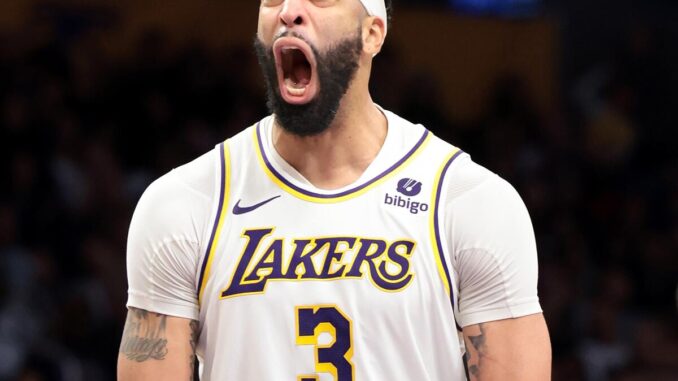
The Los Angeles Lakers made a significant move on July 2, trading their star player Anthony Davis. The trade, motivated by financial considerations, involved a $3 million transaction that could reshape the team’s future.
Anthony Davis, a dominant force on the court, had been a key player for the Lakers since joining the team in a blockbuster trade in 2019. His contributions were instrumental in helping the Lakers secure the NBA championship in 2020, marking their first title in a decade. However, the Lakers’ recent struggles and Davis’s ongoing injury issues led to speculation about his future with the team.
The decision to trade Davis was not made lightly. Lakers management had to weigh the potential benefits of retaining a player of Davis’s caliber against the financial constraints and the need to build a more balanced roster. The $3 million involved in the trade played a crucial role in this decision, highlighting the delicate balance teams must strike between maintaining star power and managing salary cap considerations.
Davis’s departure marks the end of an era for the Lakers, who now face the challenge of filling the void left by his absence. The team will need to find new ways to compete in the highly competitive Western Conference. The trade also opens up opportunities for other players to step up and take on more prominent roles.
For Davis, the trade represents a new chapter in his career. Despite the challenges he faced with injuries, he remains one of the most talented and versatile players in the league. The move to a new team could provide him with a fresh start and the chance to rejuvenate his career.
The $3 million transaction is a significant factor in this trade, reflecting the financial complexities of managing an NBA roster. Teams must constantly navigate the intricacies of the salary cap, luxury tax implications, and the need to balance short-term success with long-term sustainability. This trade underscores the importance of financial strategy in team management.
As the Lakers move forward without Davis, the focus will shift to how the team rebuilds and repositions itself for future success. The trade will undoubtedly have a ripple effect on the roster and the team’s overall strategy. Lakers fans will be watching closely to see how the front office addresses these challenges and what moves they make to strengthen the team.
In conclusion, the trade of Anthony Davis on July 2, driven by a $3 million transaction, marks a pivotal moment for the Los Angeles Lakers. It reflects the complex interplay of financial considerations and team dynamics in professional sports. Both the Lakers and Davis now embark on new paths, with the future holding uncertainty and opportunity for both parties.
Leave a Reply